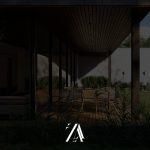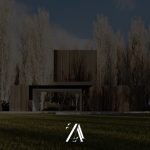The world of interior design has many different aspects, but one of the most crucial elements is lighting. Lighting can greatly impact the atmosphere and functionality of a space, and it’s essential to consider when designing any interior space. In this article, we will delve into the importance of lighting in interior design and how it can be utilized to enhance a space’s ambiance and functionality.
Interior design is an art that requires creativity, attention to detail, and a deep understanding of space and functionality. In this regard, designing an apartment from scratch without resources or AutoCAD plans can be challenging for most people. However, for some individuals, like myself, it presents a special and important challenge that drives them to test their skills and capabilities.
When I saw a simulated apartment design on Behance, I was immediately intrigued and decided to take on the challenge of replicating it. I was determined to use my modeling and material-making skills to create an exact replica of the design, even though the original photos had no details, and I had to rely solely on my own judgment and limited visual references.
One of the most important things to consider when designing lighting for an interior space is the type of light source being used. Natural light is always an excellent option, but it’s not always available or practical. Artificial lighting can be used to mimic natural light and provide a similar effect. Additionally, the color temperature of the light source can also have a significant impact on the mood of a room. Warm white light can create a cozy and inviting atmosphere, while cool white light can make a space feel modern and clean.
Over the course of 28 days, I used a variety of software tools, including Autocad, 3ds Max, Vray 6, Vantage, and Photoshop, to create the apartment design. Autocad was used to create the basic framework and dimensions of the apartment, while 3ds Max was used to create and texture the furniture and other objects in the apartment. I used Vray 6 to create the realistic lighting and color scheme, which was chosen to be very pleasant and suitable for every space in the apartment. Finally, I used Vantage to create a VR tour of the apartment, which provides an immersive experience for anyone who wants to explore the space.
One of the main features that I focused on throughout the project was lighting. I aimed to make the lighting look very real, which required experimenting with different light sources and angles. I paid careful attention to the color theme of the design, creating a comfortable and calming atmosphere that would be suitable for every space in the apartment.
Another important consideration when designing lighting for an interior space is the placement of light fixtures. Light fixtures can be used to highlight specific areas of a room or to create a specific mood. For example, pendant lights can be used to create a focal point in a room or draw attention to a specific area. Similarly, recessed lighting can be used to create a warm and inviting ambiance throughout a space.
Recreating different objects from scratch was challenging, but my determination and skills allowed me to create a realistic and beautiful apartment. The project required a lot of patience and attention to detail, but the end result was worth it. I am happy with the final renders and hope that others can appreciate the design as much as I do.
For those interested in exploring the design in more detail, I have created a VR tour of the 142-meter apartment, which includes two bedrooms and two bathrooms. The VR tour provides an immersive experience, allowing you to walk around the apartment and feel as if you are actually inside the space. This is a great way to experience the design in a more immersive way, and I hope that you enjoy it.
Overall, this project was a great challenge that helped me develop my modeling and material-making skills. It required a lot of patience and attention to detail, but the end result was worth it. I am proud of what I have accomplished and hope that this project can inspire others to pursue their own creative challenges in interior design.
None
3ds max, Vray 6, Vantage, Photoshop, Autocad






























